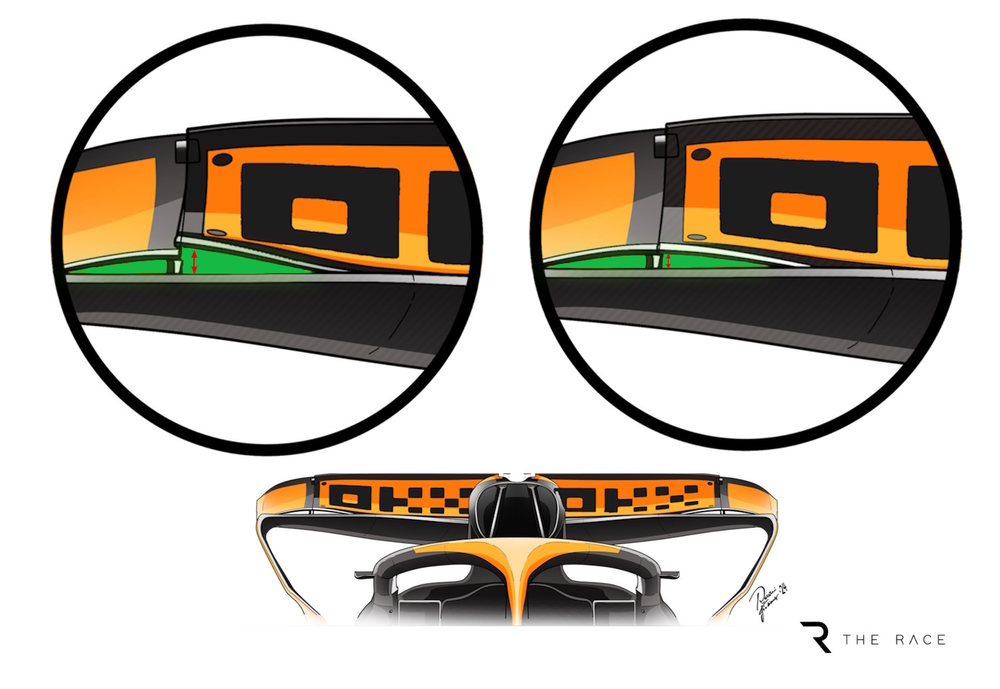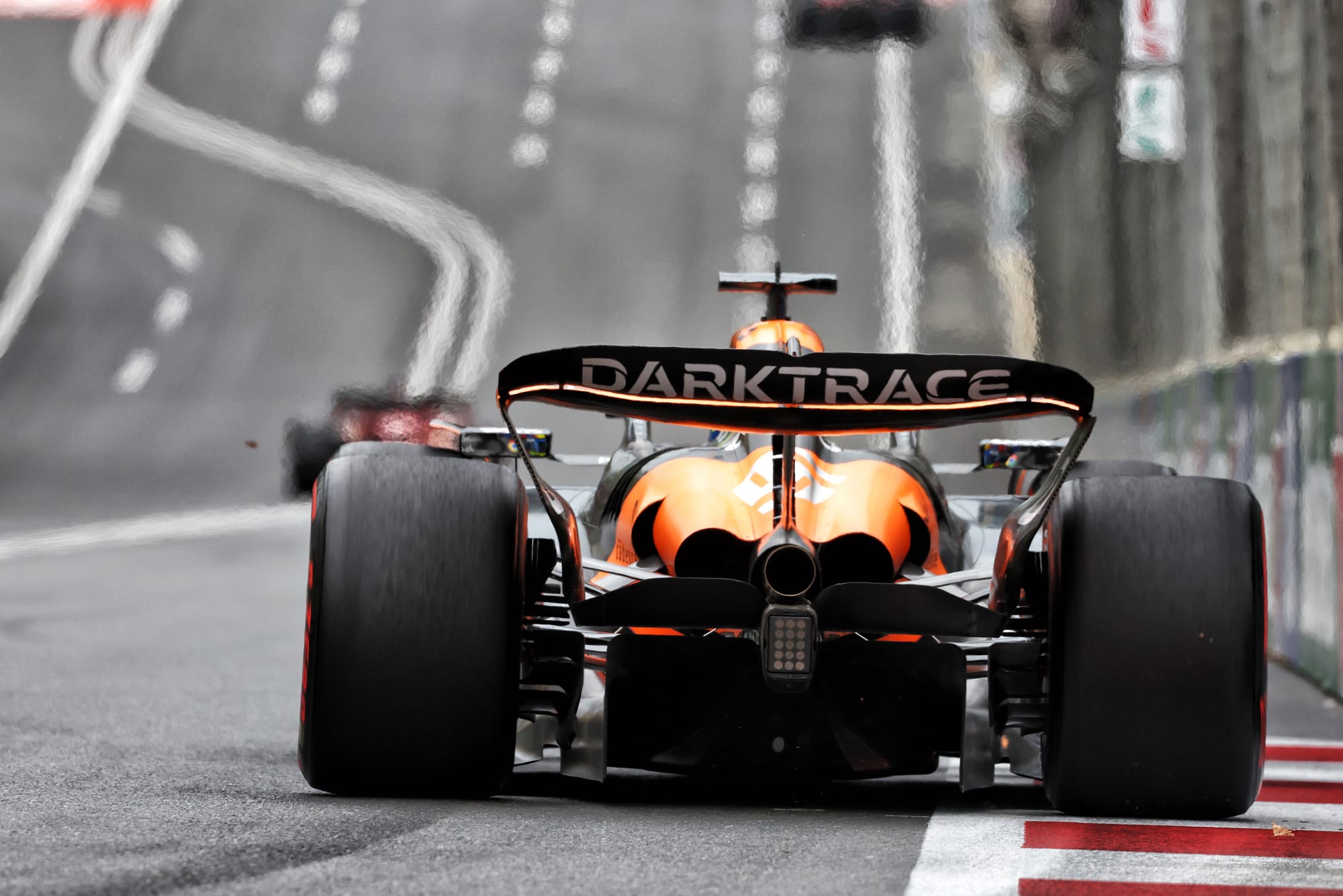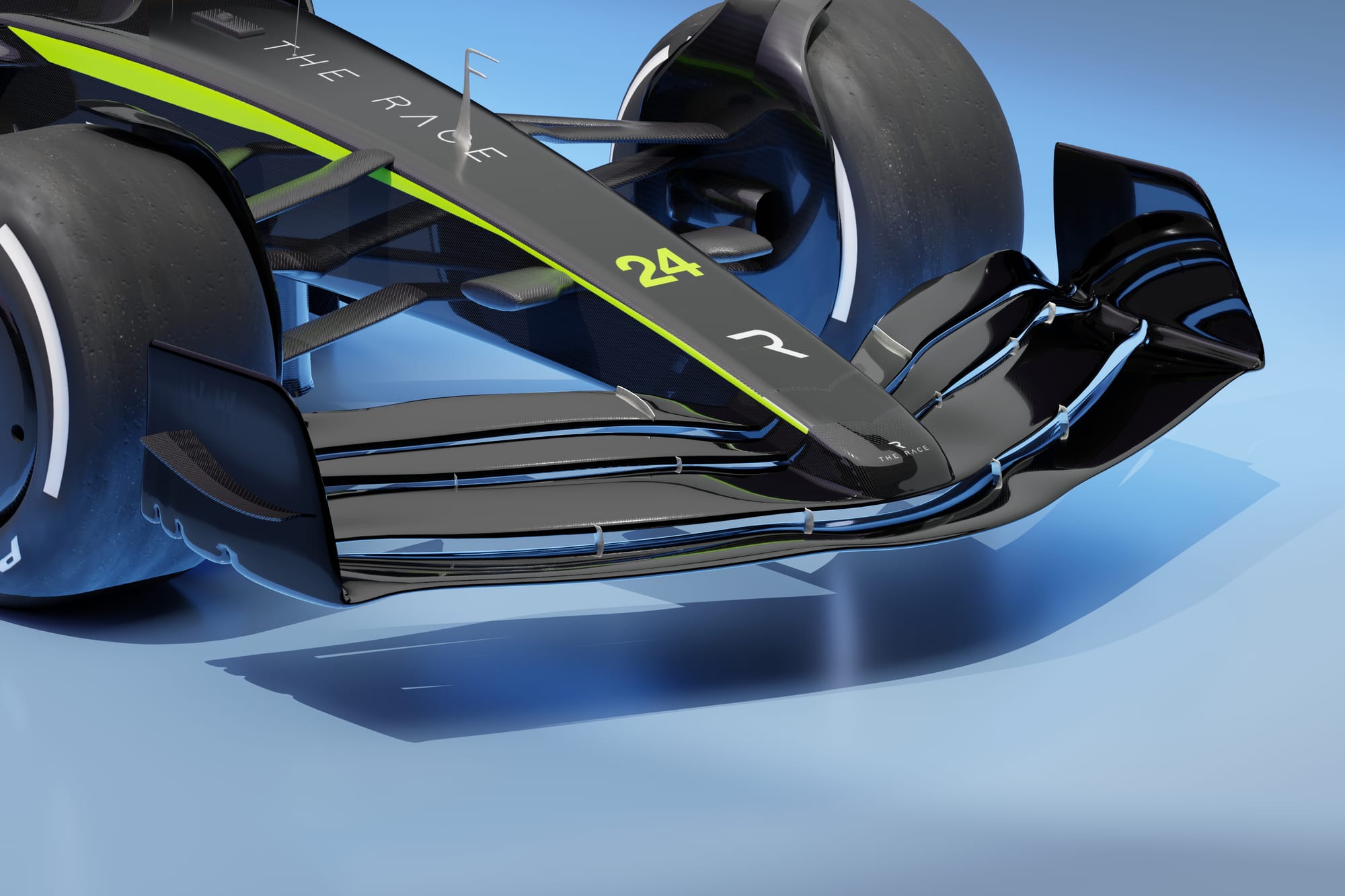Up Next

Although the FIA said McLaren's rear wing is legal, that didn't stop rival Formula 1 teams from complaining about it. These complaints seem to have propelled the FIA into demanding - or McLaren offering, depending who you listen to - adjustments be made to better control the flexibility in future.
However, I doubt we'll see the rear wing level we did in Baku again in 2024, except perhaps for Las Vegas, so it will have limited impact on the rest of the season.
In reality, if the rear wing is flexing and it opens the slot gap at the outer end slightly, as we can see on the video footage, then the current deflection tests are not adequate.
I would also question the advantage of this wing geometry change.
McLaren's rear wing design
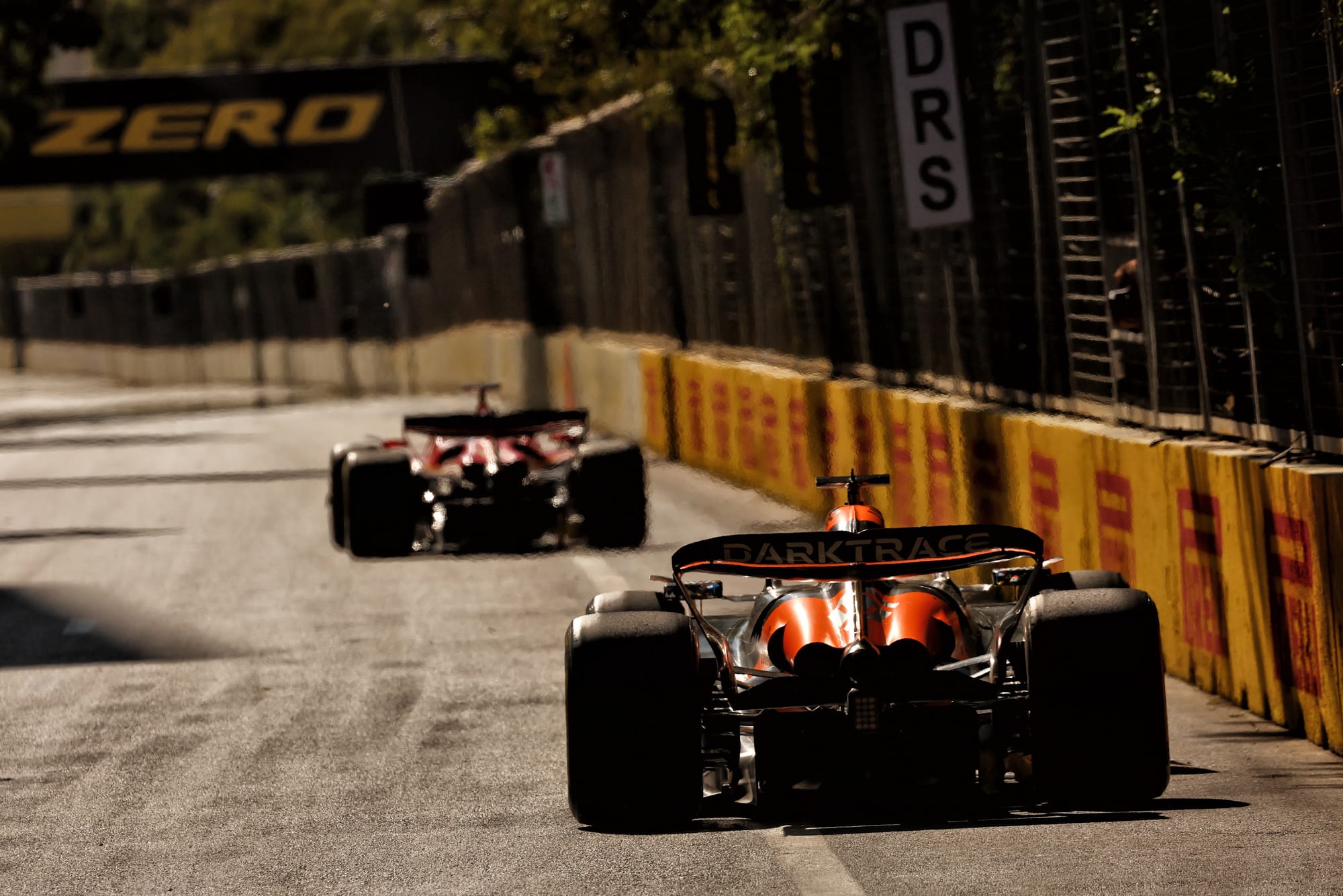
The regulations stipulate that the minimum slot gap is 10mm with the DRS closed and a maximum of 85mm when the DRS is open.
Let's say that the drag from minimum to maximum slot gap opening, which is 75mm x 490mm each side (giving a total opening of 73,500sq/mm), equates to 15mph or 24km/h speed advantage increase.
The extra opening we see on the McLaren due to deflection I would estimate at 10mm deep at the outer end tapering to nothing going inward for roughly 200mm.
That equates to an open area of 1000sq/mm each side, which equates to a total opening of 2000sq/mm when the DRS is closed. That's roughly 2.7% of the potential of the DRS opening, so equates to a speed advantage of possibly 0.4mph or 0.65km/h.
Balancing out the risk versus reward, this hardly seems worth it.
Other teams might need to be careful of what they complain to the FIA about, because it might just mean that it has highlighted to McLaren something it might not have actually known about itself.
As McLaren says, the wing passes the FIA load tests so there's no legality problem - but it does mean that clearly the FIA tests are not stringent enough.
Taking into account that the bodywork flexibility is always a grey area because there has to be some degree of movement, passing the various load tests is the actual measure of legality.
I've previously suggested ways the front wing load test can be modified with immediate effect if the FIA wanted to be more rigorous, but this is about the rear wing.
McLaren's flexible wings are inefficient
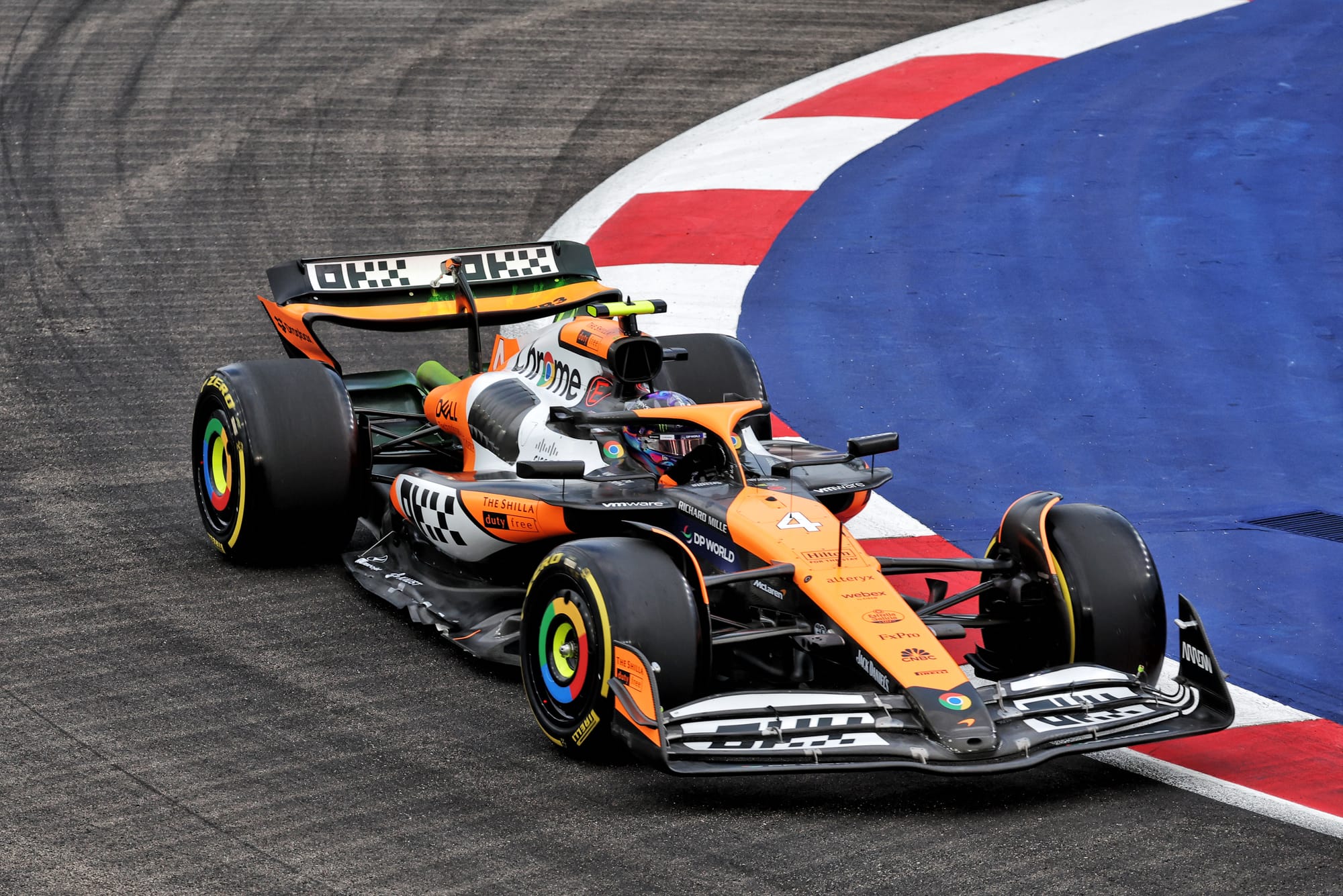
Given the challenge of these ground effect cars is achieving a good balance across a wide range of corner speeds, I have a different suggestion for what could be a very beneficial development path for this kind of flexibility.
This is about far more than a straightline speed boost. I would have been pushing for the slot gap at the outer ends to get smaller with speed.
And provided in doing that it met the regulations that set a limit on the slot gap size, which I'm sure could be achieved, then it's not a legality problem.
To set the scene, if the point where the downforce-generating components are concentrated, which is called the centre of pressure, were stable then these current cars have a tendency to understeer fairly badly in slow- and medium-speed corners and have a nervous rear end in the fast corners.
This understeer would grain the front tyres and the nervous rear end would eat up the rear tyres and spook the driver very quickly.
So the teams have come up with a way of designing the front wing mainplane and elements to rotate with load.
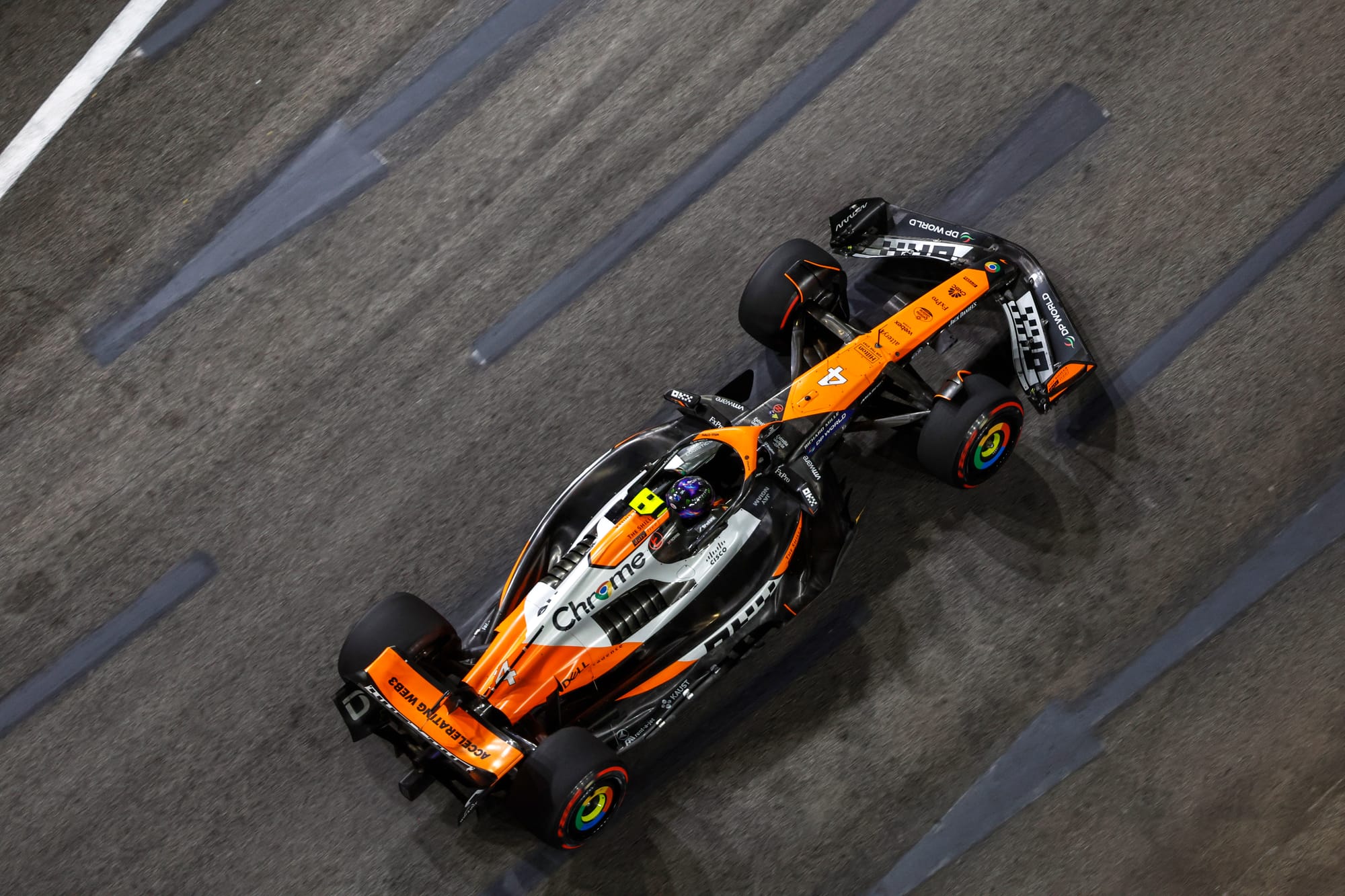
This reduces its angle of attack and, with that, they can have a more forward centre of pressure in slow- and medium-speed corners.
Then, when that front wing rotates with speed, it reduces the front downforce which moves the centre of pressure rearward with speed, stabilising the rear of the car in fast corners.
The problem with that is that by backing off the angle of attack of the front wing at high speed you are throwing away overall downforce.
That's not the fastest way to achieve the best laptime.
There's a better way
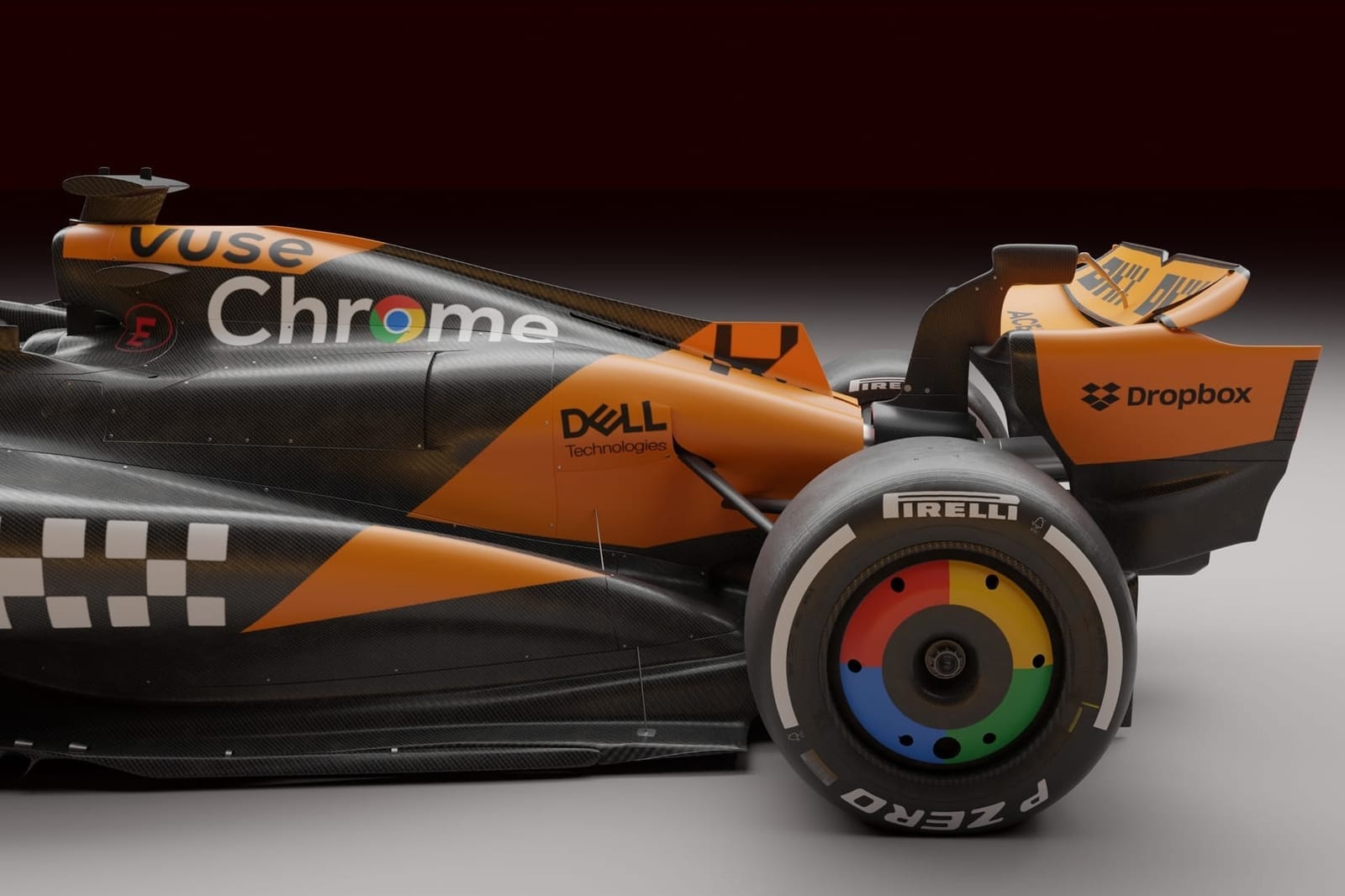
By decreasing the slot gap between the two wing elements when the DRS is shut it would increase the rear downforce to stabilise the rear end at high speed, as opposed to reducing the front downforce which reduces the front grip.
As I said above, the regulations require the slot gap to be a minimum of 10mm when the DRS is closed and a maximum of 85mm when the DRS is open. As long as the slot gap is never less than 10mm even at speed then it can be at 20mm at the outer ends when the car is stationary and still be legal.
That is how the FIA treat its own regulation that states that all aerodynamic surfaces must be immobile, which is effectively a blanket ban on flexible bodywork but is impossible for any team to achieve, so it's a regulation that in effect carries no weight.
My solution means that when the DRS is shut, it generates a good level of rear and overall downforce.
This would probably allow a team to run a smaller, lower-downforce, lower-drag rear wing as standard.
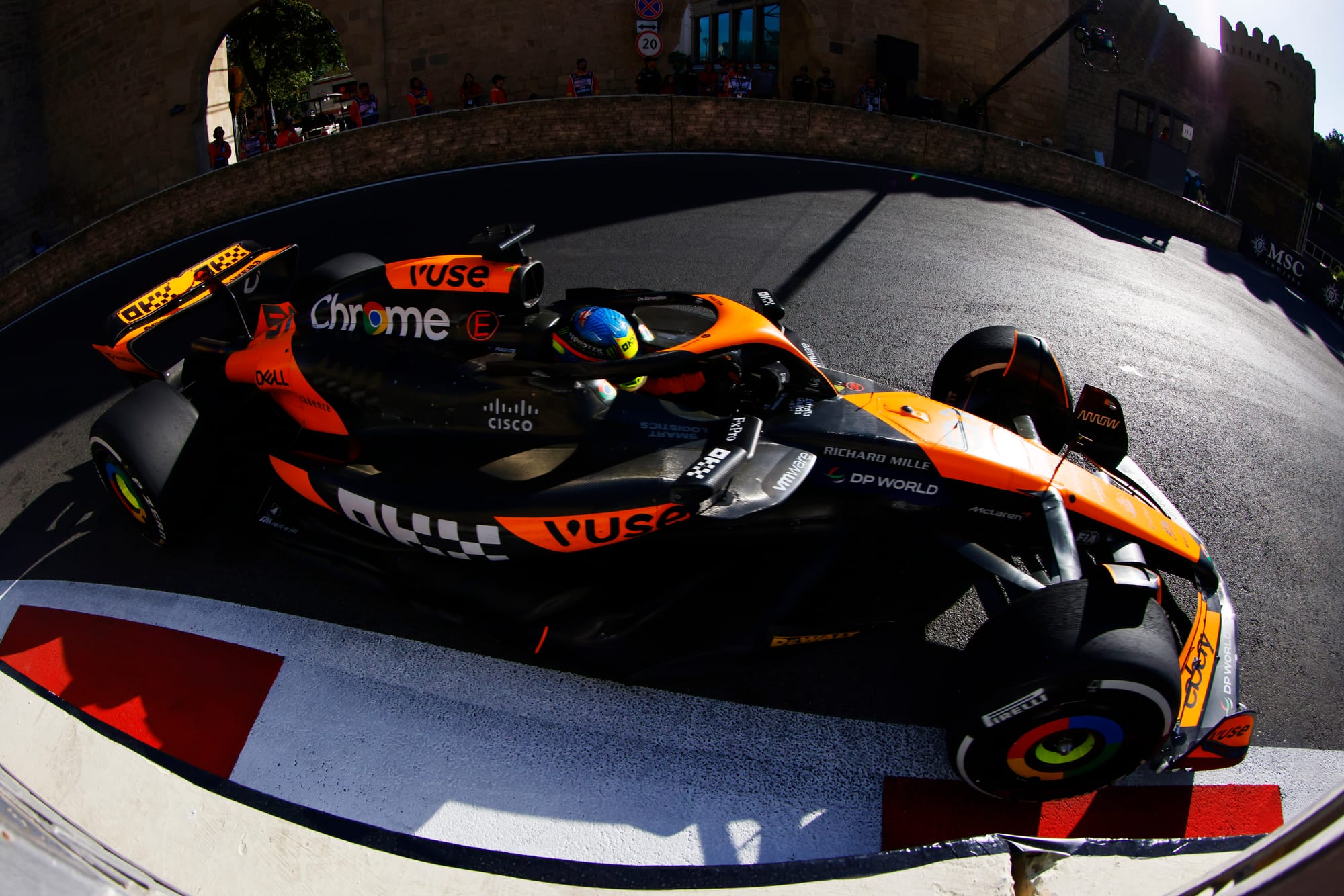
More importantly, that increase in downforce that the rear wing can produce at speed improves the balance from slow to high speed, and we need to remember the driver drives the balance of the car and not the actual level of overall downforce (though a bit more never hurts).
You could still lap Monaco with a Monza level of downforce and Monza with a Monaco level of downforce, providing the balance front to rear was reasonable.
So when you are leading and can't use the DRS, the top speed is reasonable because you are potentially running a lower drag rear wing than others.
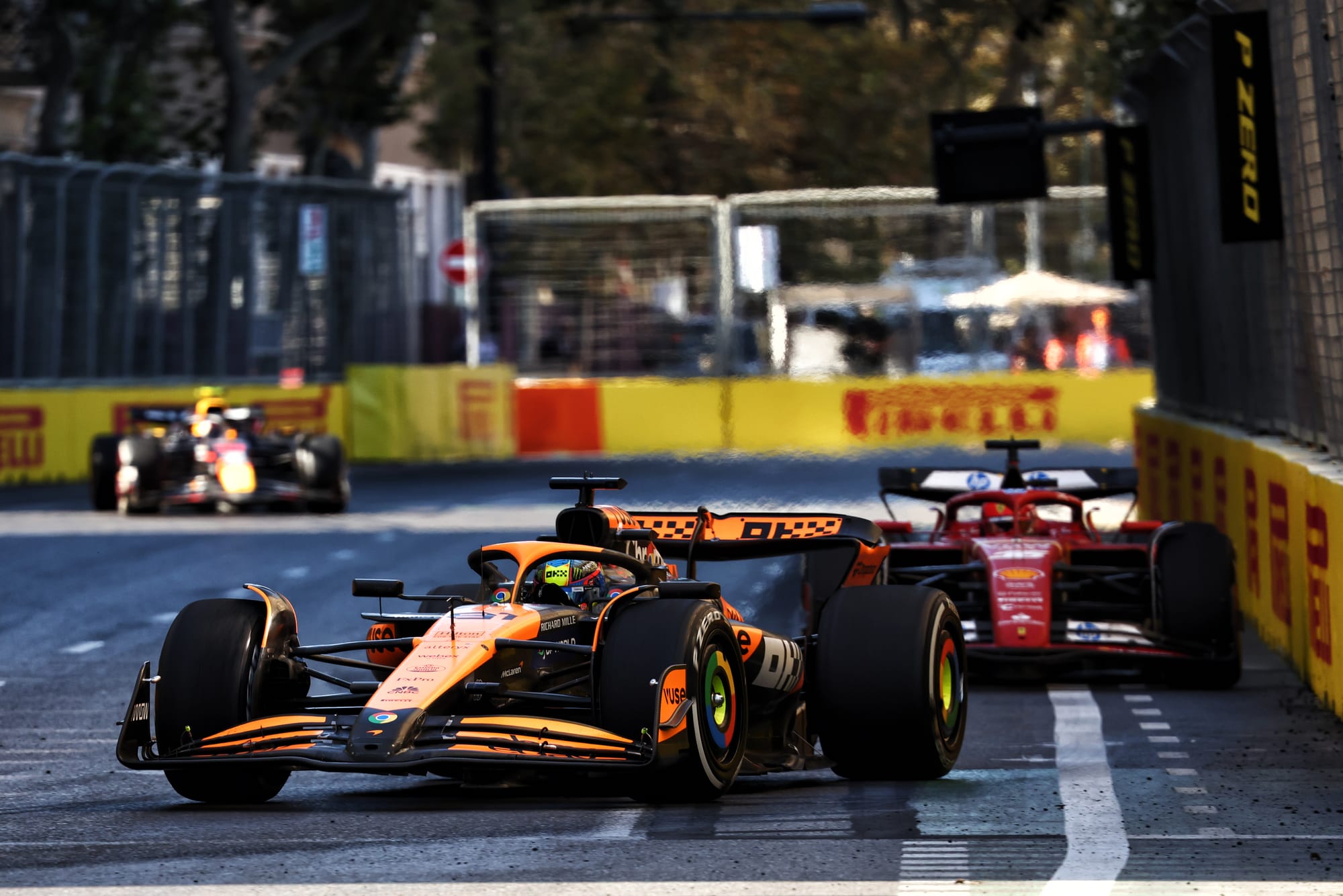
When the DRS is opened, the drag reduction will also be greater as that flexible area also loses its extra load, so it goes back to its normal position.
With the rear wing upper flap mounted on two pivots at its trailing edge outer extremity, and the DRS actuator supporting it in the middle and further forward from the trailing edge, you have an ideal triangular support.
This means you allow the outer forward end to flex downward as the load increases. It could even have a slot gap separator at the outer end to make sure the slot gap never gets less that 10mm. This is actually much easier than trying to design all those front wing elements to allow rotation.
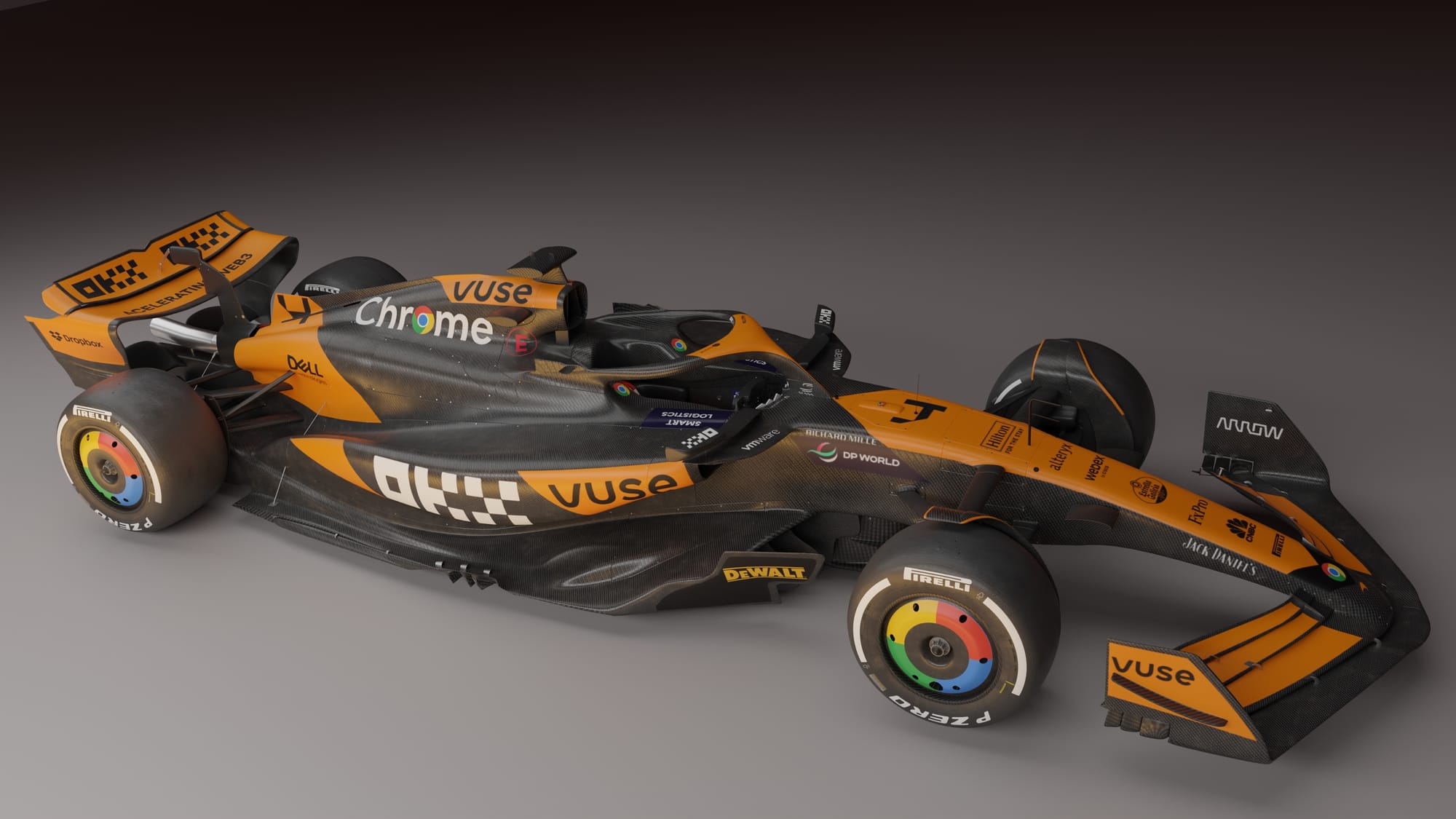
As I said above, the balance will move rearwards with speed as the load increases on the rear wing, but also the overall car load will increase as opposed to diminish, which is what will happen if you achieve that same centre of pressure shift by allowing the front wing to back off.
In my opinion this would definitely be a win-win and, in reality, I can't see anything questionable in the design. Providing, that is, the minimum slot gap is not less than 10mm at high speed and maximum slot gap is no more than 85mm when the DRS is open.
So there's lots of ways that teams could potentially gain an advantage, and perhaps a bigger one, from flexing the rear wing in other ways.
That's why this is a debate that is never going to go away.
In reality, all of this is very difficult to test with loads equivalent to those the wing sees at 360km/h, which is where it really matters.
It's always the case that as long as you pass the existing tests, you are good to go.
That's what McLaren made the most of prior to these latest changes. But now other teams and the FIA have pushed it to make changes that will require its aero leaders to scratch their heads again, they might just come up with something better.


